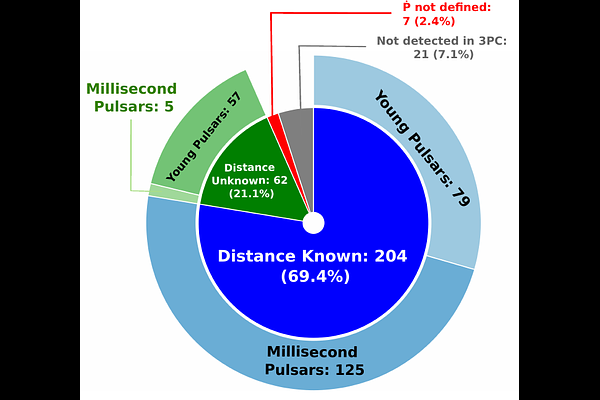Prediction of radio-quiet gamma-ray pulsar distances using the Fundamental Plane relation

Prediction of radio-quiet gamma-ray pulsar distances using the Fundamental Plane relation
Ekrem Oğuzhan Angüner
AbstractThe fundamental plane (FP) relation connects gamma-ray luminosity to intrinsic pulsar properties, offering the potential to estimate distances for radio-quiet (RQ) gamma-ray pulsars, where direct measurements are often unavailable. The Fermi Third Pulsar Catalog presents spectral data for 294 gamma-ray pulsars, including 72 RQ pulsars, of which only 9 have known distances. This study investigates the FP relation's potential to predict distances for RQ gamma-ray pulsars using machine learning (ML) approaches. Ordinary least-squares regression was employed alongside ML methods, including random forest and support vector regression, to predict RQ gamma-ray pulsar distances. To ensure robustness, the analysis considered spectral cutoff significance and outlier data. Results confirm that the FP relation is valid only for pulsars exhibiting significant gamma-ray cutoffs, with FP exponents closely matching theoretical expectations. It was shown that gamma-ray emission origins significantly favor the curvature radiation regime over the synchrotron regime at the 4.2 sigma level. The distances for 62 RQ pulsars, for which no traditional measurements exist, are predicted for the first time. The luminosity and spatial distributions of the considered RQ pulsar population match known pulsar distributions. Predictions for RQ pulsars with known distances are consistent with measured data. This study provides a proof of principle that the FP relation, combined with ML methods, is a promising tool for distance estimation in RQ gamma-ray pulsars, using gamma-ray emission directly for the first time in pulsar distance estimates. Future improvements can be achieved with larger data sets, precise spectral cutoff determinations, and corrections for key factors like the beaming factor.